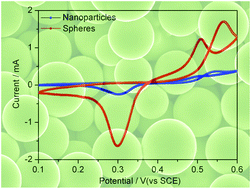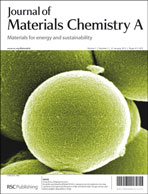A bottom-up based photomediated strategy is presented to create single crystalline silver spherical particles by pulsed laser irradiation of silver nanoparticles in liquid, where the unique selective laser heating is responsible for the formation of spherical particles. The present approach is facile and flexible for the design of silver spherical particles with tunable sizes. Systematical studies reveal that the experimental parameters including laser fluence, laser irradiation time, dispersing liquid, and concentration of starting material are important factors that influence the formation of silver spherical particles. As a demonstration of the as-synthesized silver spheres for electrochemical applications, the performance of silver spherical particles as potential supercapacitors was investigated by cyclic voltammetry, and the results indicated a higher capacity of silver spherical particles compared to that of silver raw nanoparticles, which is considered to originate from the enhanced electronic conductivity due to the single crystalline feature of silver spherical particles. We believe that the photomediated method presented in this work can be set as a new alternative in creating a variety of noble metallic spherical particles.

You have access to this article
 Please wait while we load your content...
Something went wrong. Try again?
Please wait while we load your content...
Something went wrong. Try again?


 Please wait while we load your content...
Please wait while we load your content...